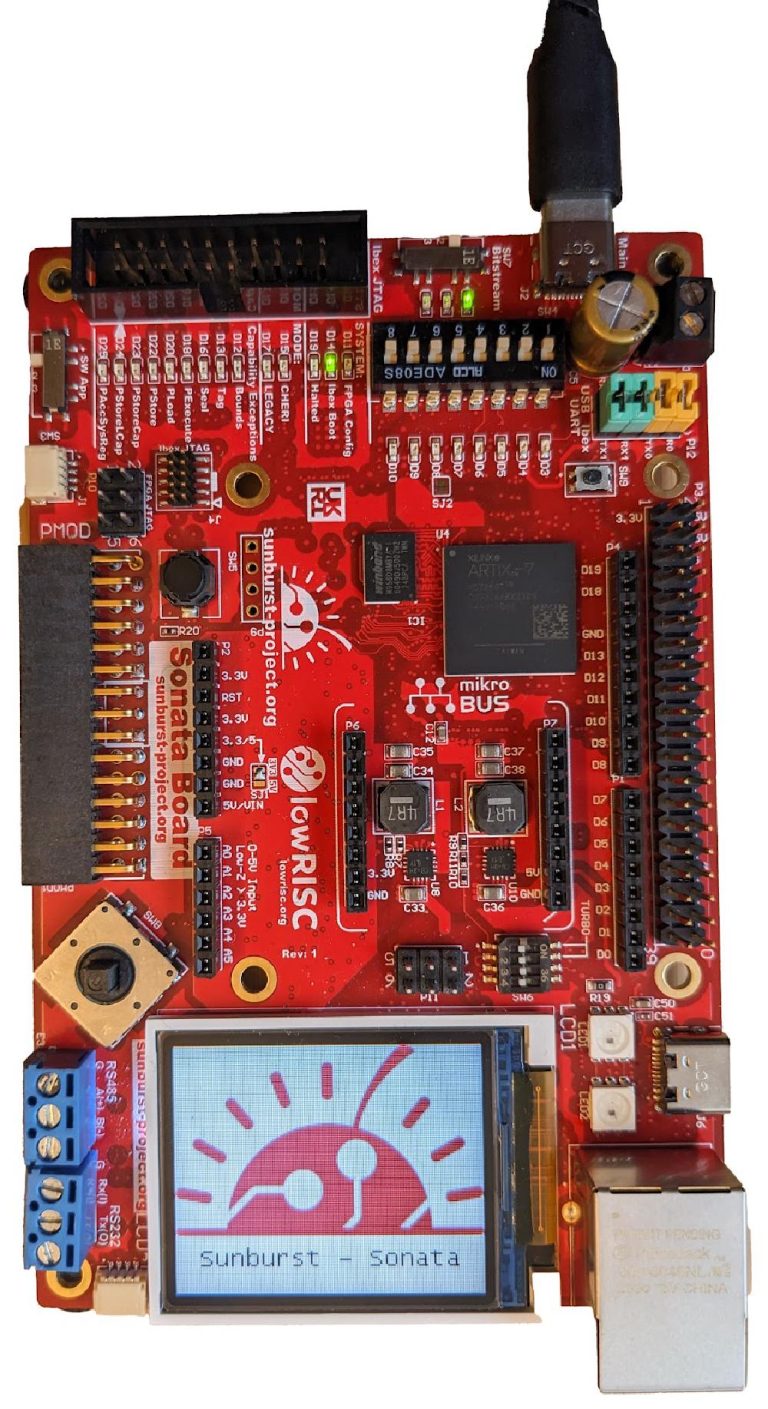lowRISC-SCI Sonata Duet
lowRISC C.I.C.(Community Interest Company), the open silicon ecosystem non-profit, and SCI Semiconductor, a CHERI specialist, are collaborating to tape out the Sonata design with a view to moving CHERI technology to commercial adoption.
The collaboration will focus on realising a new open source top-level design — with publicly available design verification (DV) dashboards — based on lowRISC’s Sonata platform (which itself leverages Microsoft’s Ibex-based CHERIoT core).
It will support the innovation required for the creation of a commercially available device from SCI Semiconductor within their advanced ICENIdevice family, targeting a wide array of operational technology (OT) applications.

The work is taking place under the UKRI-funded Sunburst Project, led by lowRISC CIC (who are also leading technical aspects of the 6th cohort of the Digital Security by Design (DSbD) Technology Access Programme).
Because of the Sunburst Project’s success thus far in making Sonata accessible to a wider audience and promoting CHERI as an efficient security standard, UKRI has expanded its scope and enabled SCI Semiconductor to join as a new partner.
The aim of the project extension is to validate the applicability of the open-source design in a GDSII database and evaluation of samples using Global Foundry 22nmFDX SOI Multi-Project Wafer process.
While targeting validation through a commercial tapeout, lowRISC’s project deliverables will be open source, thereby allowing others to research, develop, and commercialise next generation secure-by-design OT electronic devices — without the barriers to entry that are normally associated with transformative hardware technologies.
When implemented effectively, open silicon designs can support unlimited reuse, allowing scarce development resources to be concentrated on differentiating rather than foundational IP, while also offering fully constructed systems that academic partners can leverage as foundational research tools.
“Open source, done right, creates a true virtuous circle — with strong economic benefits for all participants — and represents a significant market transformation for our industry,” said Dr. Gavin Ferris, CEO of lowRISC. “Our team is uniquely equipped to take on this challenge as we host both the Ibex and OpenTitan projects, have helped successfully prepare the ‘Earl Grey’ OpenTitan chip design for commercial tapeout, and have partnered with Microsoft on the build-out of CHERIoT-Ibex DV. This new collaboration brings us one step closer to our shared vision: a world where commercial-grade open source silicon is embraced by all.”
The proprietary aspects of the project, including non-public IP and interfacing with the chosen foundry will be managed by new Sunburst Project partners, SCI Semiconductor.
“A lack of commercial availability of CHERI technology is a critical challenge for governments and industry stakeholders globally. Our team, which includes many previous Microsoft CHERIoT-Ibex core contributors, is aiming to resolve that by giving users the ability to deliver new integrated systems and create competitive designs,” said Haydn Povey, Chief Executive, SCI Semiconductor. “The innovation supported by this effort will enable SCI Semiconductor’s ICENI family of microprocessors, a new generation of CHERI-enabled RISC-V microcontrollers, into the marketplace. As the chip industry accelerates its already widespread adoption of the RISC-V architecture, this project marks a significant inflection point for developers. Now every engineer, every company and every organisation can embrace high-integrity security in their microcontrollers.”
Oxford University Innovation Ltd. will also be contributing to the project, providing additional confidence in the robustness of the CHERIoT-Ibex design through formal verification.










